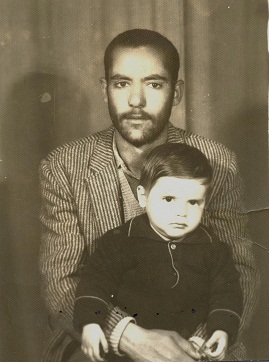



















Porphyria cutanea tarda and hepatitis C virus
INTRODUCTION – Porphyria cutanea tarda (PCT) is the most common of the hepatic porphyrias. It is due to reduced activity of the enzyme uroporphyrinogen decarboxylase (UROD), causing the subsequent build-up of uroporphyrinogen in the blood and urine. PCT has both sporadic and inherited (autosomal dominant) forms that are indistinguishable clinically. Hepatic UROD enzyme activity is diminished in both disorders. However, erythrocyte UROD activity levels are reduced only in the inherited form.
The clinical manifestations of PCT and the etiologic relation of the sporadic form to hepatitis C virus (HCV) infection will be reviewed here.
Possible triggers of PCT include polyhalogenated hydrocarbons (such as hexachlorobenzene), alcohol, estrogens, and iron overload. It is unclear how these triggers precipitate an attack.
Skin lesions – Skin lesions are frequently the reason that patients with either form of PCT first seek medical attention. Exposure to the sun and/or minor trauma can lead to skin erythema and the development of vesicles and bullae that may become hemorrhagic. Hyperpigmentation, hypopigmentation, hirsutism, and sclerodermatoid changes may develop with passage of time.
Liver disease – Chronic liver disease is a common finding in sporadic PCT. Liver biopsy shows a wide range of changes, including steatosis, mild to severe inflammation, hepatic fibrosis, and cirrhosis. Hepatocellular carcinoma, usually in presence of cirrhosis, also occurs with increased frequency. In contrast, liver involvement appears to be infrequent in inherited PCT.
Most patients (about 80 percent) also have mild degrees of iron overload that was thought to be due to the defect in heme synthesis. However, direct effects of HCV and mutations in the HFE gene that are responsible for hereditary hemochromatosis are thought to be more important factors in the genesis of the iron overload.
RELATIONSHIP TO HEPATITIS C VIRUS – A strong association between the sporadic form of PCT and HCV infection (overall prevalence of HCV of 50%).
Pathogenesis – The mechanism by which HCV infection might cause or act as a trigger for PCT in predisposed subjects is not known. It has been suggested that HCV, a cytopathic virus, is able to decompartmentalize iron from within the hepatocyte, leading to the release of "free" iron. This iron may uncouple cytochrome P450 reductase/cytochrome P450 system, resulting in release of activated oxygen which may decrease UROD activity and provoke an attack.
Chronic HCV infection may impair porphyrin metabolism by reducing the glutathione concentration in hepatic cells.
DIAGNOSIS – PCT is typically suspected on clinical grounds and the diagnosis is confirmed by the demonstration of markedly elevated urine uroporphyrin levels. Values above 800 µg/day are often seen when photosensitivity is present, well above the normal range of 10 to 50 µg/day. The diagnosis can also be made directly by measuring hepatic UROD activity (if available). Erythrocyte UROD activity can also be measured if the inherited form of PCT is suspected.
Once the diagnosis of PCT is established, the HCV status and hepatic iron stores need to be determined. Thus, HCV serological testing (HCV antibody by RIBA and/or HCV RNA by PCR) and liver biopsy should be performed. In addition, genetic testing for HFE mutations should be obtained, and family members screened appropriately.
TREATMENT – Management of PCT has traditionally consisted of avoiding factors which precipitate attacks such as alcohol, estrogens, and exposure to polyhalogenated hydrocarbons. Further therapy is aimed at both symptomatic relief and treatment of HCV infection, if present.
Phlebotomy – Removal of iron by phlebotomy should be attempted in symptomatic patients with a regimen similar to that used for hereditary hemochromatosis. A relatively small amount of iron removal often leads to improvement in both the dermatologic and hepatic manifestations. Remissions may be long-lasting, but relapses are the rule, sometimes in association with resumption of excess ethanol use or iron administration. Relapses respond to additional course(s) of phlebotomies. Patients should be warned that iron supplementation following successful phlebotomy can lead to relapse. It is unclear at present if phlebotomy is beneficial in the minority of patients without hepatic iron overload.
Chloroquine – The antimalarial drug chloroquine has been used successfully in cases of PCT refractory or intolerant to phlebotomy. Chloroquine forms a water-soluble complex with uroporphyrin, thereby removing excess uroporphyrins from the tissue and allowing urinary excretion.
Interferon alfa – Although there is increasing evidence of the efficacy of interferon alfa in chronic HCV infection, its role in HCV-associated PCT has yet to be defined.
RECOMMENDATIONS – In addition to avoiding precipitants of acute attacks, we recommend the following approach to patients with the sporadic form of PCT:
• If HCV is present in the setting of hepatic iron overload, we recommend the use of interferon alfa (if the patient is a candidate for treatment) together with phlebotomy (one unit of blood removed weekly until iron deficiency is achieved). Although combination therapy with interferon plus ribavirin has not been studied in this setting, it may be a reasonable alternative based upon its increased efficacy compared to interferon monotherapy in chronic hepatitis C in general. However, ribavirin is associated with hemolysis, which may require adjustment in the rate of phlebotomy.
• Phlebotomy alone should be instituted if iron overload occurs in the absence of HCV.
• It is unclear if phlebotomy is beneficial in the small number of patients with PCT and normal hepatic iron concentration. We recommend interferon alfa in combination with ribavirin if HCV is present in this setting.
Masoud sadreddini ,Gastroenterologist, associated professor of faculty of medicine , Urumieh medical University
msadrodin@yahoo.com